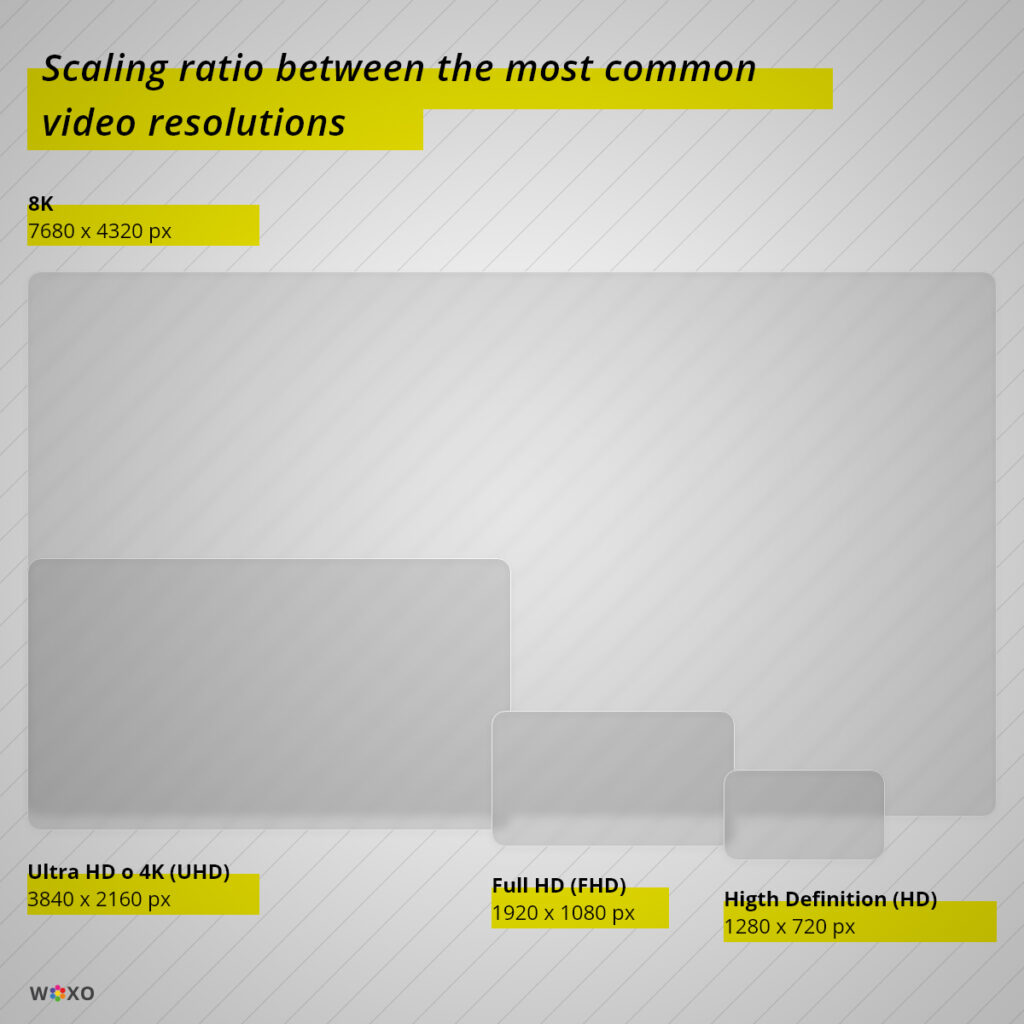Today we are going to be talking about a popular concept nowadays, video resolution. This concept is used similarly to refer to several things within the video world. Knowing its meaning and proper characteristics will help us have better video quality. And our audience will be more pleased with the image quality we provide. Ready?

Video resolution
Each video is composed of rows and columns of pixels. To obtain a better quality image and a sharper video, the more rows and columns the video needs to have. This is precisely what defines the resolution of a video: the number of pixels in height and width that the video has. The video aspect ratio can be also related to this topic in the design world, you can read more about it here.
How we define it?
We usually refer to resolutions by their pixel values of the video’s height and width (1920 x 1080 px, for example).
However, there are two other ways in which we refer to it. The first is using the numerical value of the number of pixels of the height that each frame of the video has—for example, 720 or 1080. When we buy a TV or an external monitor for our pc, or export a video using professional software, we sometimes find this number accompanied by a letter p (1080p, for example) or i. There is no difference in resolution between a 1080p and a 1080i; they have the same amount of pixels in height. The letters only define how each frame is displayed: progressive or interpolated – but don’t worry, that’s a topic for another article!
The other way to express a resolution is to use acronyms. This is the ways you will see it displayed for most commercial and common uses. Each acronym is associated with the number of pixels in the height of the video. For example:
- HD (High Definition): 1280 x 720 px
- FHD (Full HD): 1920 x 1080 px
- UHD 4K (Ultra HD): 3840 x 2160 px
- 8K: 7680 x 4320 px

However, it is very common to confuse a video’s resolution (1080, UHD) with its aspect ratio (16:9). They are two different things that refer to different characteristics. Beware that two videos of different resolutions can have the same aspect ratio.
Conclusion
The resolution of a video defines the number of pixels of width and height it has. We usually refer to resolutions directly by the pixel values of width and height (1920 x 1080 px ). However, video resolution can be declared by using only the value of high pixels (1080) or with acronyms (HD) (if they are the most commercial resolutions). The two most used nowadays are Full HD (1080) and Ultra HD or 4K (2160).
Let us know in the comments if you know of other resolutions and which ones you use the most! Remember that you don’t have to have an expert to create a great video. Check out WOXO’s Video Maker to get started for free!
Any information we’ve missed? Tell us on Instagram @woxotech